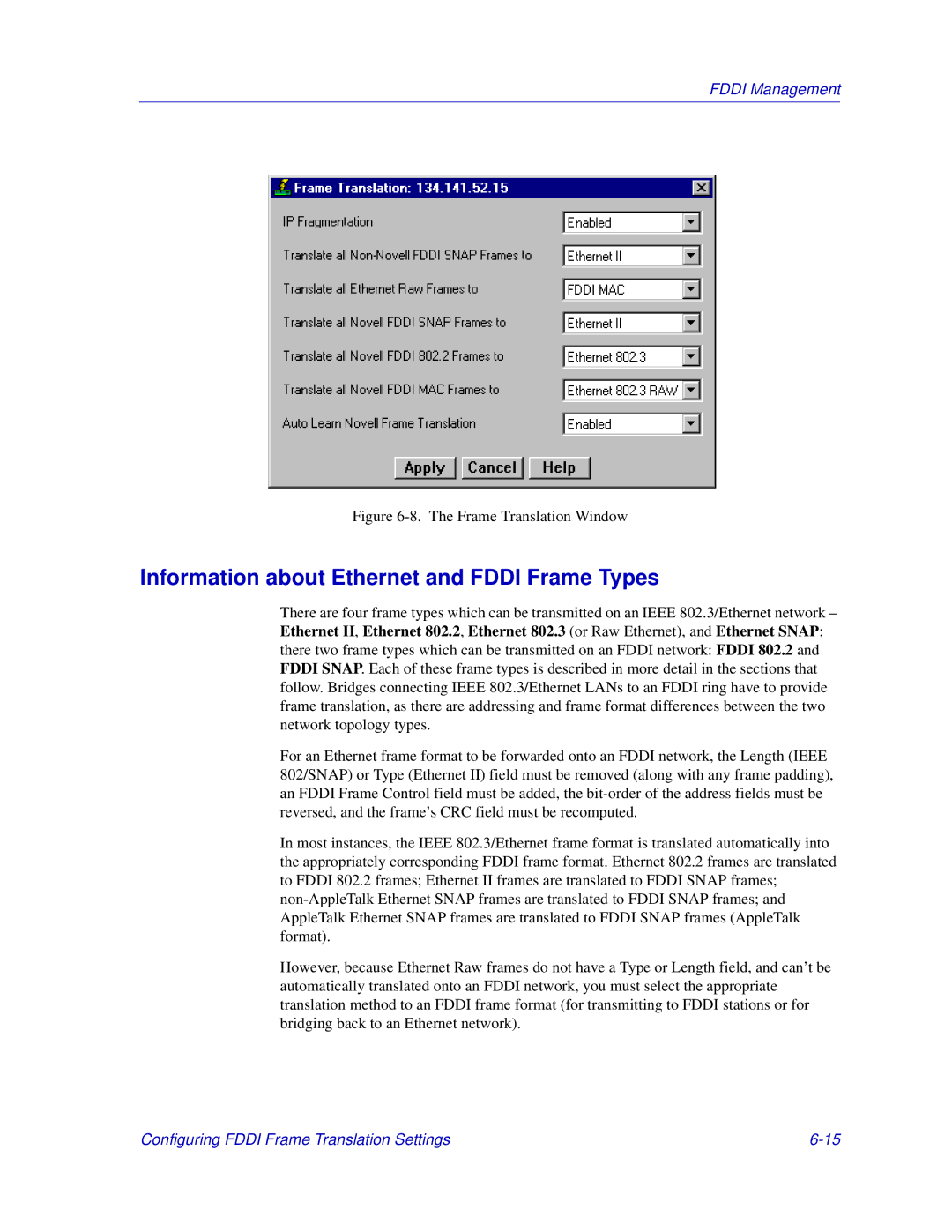
FDDI Management
Figure 6-8. The Frame Translation Window
Information about Ethernet and FDDI Frame Types
There are four frame types which can be transmitted on an IEEE 802.3/Ethernet network – Ethernet II, Ethernet 802.2, Ethernet 802.3 (or Raw Ethernet), and Ethernet SNAP; there two frame types which can be transmitted on an FDDI network: FDDI 802.2 and FDDI SNAP. Each of these frame types is described in more detail in the sections that follow. Bridges connecting IEEE 802.3/Ethernet LANs to an FDDI ring have to provide frame translation, as there are addressing and frame format differences between the two network topology types.
For an Ethernet frame format to be forwarded onto an FDDI network, the Length (IEEE 802/SNAP) or Type (Ethernet II) field must be removed (along with any frame padding), an FDDI Frame Control field must be added, the
In most instances, the IEEE 802.3/Ethernet frame format is translated automatically into the appropriately corresponding FDDI frame format. Ethernet 802.2 frames are translated to FDDI 802.2 frames; Ethernet II frames are translated to FDDI SNAP frames;
However, because Ethernet Raw frames do not have a Type or Length field, and can’t be automatically translated onto an FDDI network, you must select the appropriate translation method to an FDDI frame format (for transmitting to FDDI stations or for bridging back to an Ethernet network).
Configuring FDDI Frame Translation Settings |
